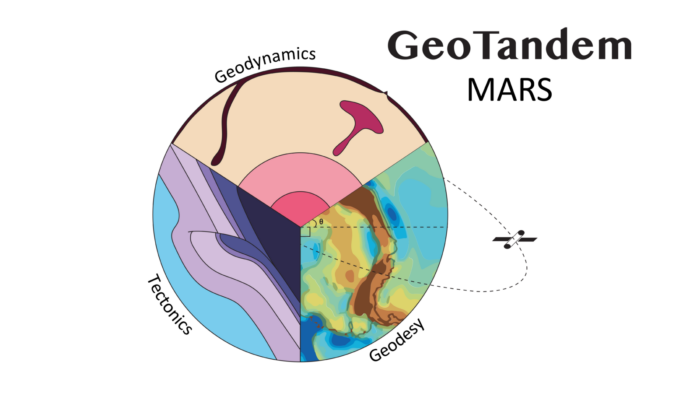Welcome to the first of its kind, the Geotandem 01! A collaborative series between EGU divisions. Interdisciplinarity is intrinsic to Geosciences, so we want to showcase how researchers approach the same topics from different but also complementing perspectives. In each edition, we will bring you a high-interest topic for the community seen from the eyes of diverse disciplines. Today, the Tectonic ...[Read More]
Exploring Submap: Subduction Zones Data Mapping and Analysis in just a few clicks
Subduction zones are areas where one tectonic plate dives beneath another one and sinks into the Earth’s mantle, creating powerful earthquakes and volcanic eruptions. Understanding the intricate details of subduction zones can be a daunting task, and retrieving the necessary data often feels like an uphill battle. But fear not! The Geosciences Montpellier Laboratory in France has come to the rescu ...[Read More]
TS Must-Read – Molnar & England (1990): Late Cenozoic uplift of mountain ranges and global climate change: chicken or egg?
The idea that the Pleistocene glaciation was caused by a late Cenozoic rise of mountain ranges had been developed since the mid 19th century. Although this original idea did not hold, new arguments for a relation between a late Cenozoic uplift of mountains and global cooling were presented from the 1970s onward. These arguments focused on how increased surface elevations would affect the albedo, t ...[Read More]
Geology Bites Podcast
Podcast conversations about geology with researchers making key contributions to our understanding of the Earth and the Solar System I have always wanted to grasp the widest spatial and temporal context in which we find ourselves. After completing a physics degree at Cambridge University, this led me to cosmology, and a PhD on the structure of clusters of galaxies at Oxford University. I then join ...[Read More]
TS Must-Read – Boyer & Elliot (1982) Thrust systems
The now-classic paper of Boyer & Elliott (1982) presented a novel and general geometric framework to study thrust systems. The framework describes thrust surfaces by lines of contact between thrusts, or branch lines, and lines of thrust termination, or tip lines, and examines how they join into imbricate fans or duplexes. The framework allows accurate and succinct descriptions of the geometry ...[Read More]
TS Must-read – Morgan (1968) Rises, Trenches, Great Faults, and Crustal Blocks
In his 1968 paper “Rises, Trenches, Great Faults, and Crustal Blocks”, Jason Morgan added the missing pieces of the plate tectonics: the representation of plates’ motion in terms of spherical surface, and plate rigidity. In the very first lines of the paper he describes his contribution as an “extension of the transform fault concept [of Wilson, 1965; see the TS-must-read blogpost of October 15, 2 ...[Read More]
TS Must-Read – Wilson (1966) Did the Atlantic close and then re-open?
J.T. Wilson published “Did the Atlantic close and reopen?” in 1966, giving birth to the so called “Wilson Cycle”. The article is a key steppingstone for the theory of plate tectonics, and it is a must-read paper not only in tectonics studies but also in paleontology and stratigraphy. The questions raised can be generally abridged in two: “Why regions with similar fauna can be very far from each ot ...[Read More]
TS Must-Read – Mckenzie and Parker (1967) The North Pacific: an example of tectonics on a sphere
The paper describes how large, rigid, aseismic regions can be defined with Euler’s theorem, which describes the geometry of motion on a sphere, i.e. the Earth’s surface. Points on these large and rigid blocks move in relation to other blocks describing small circles set by their rotation pole. The paper describes this as “paving stone theory”, where tectonic plates are “paving stones”, and success ...[Read More]
TS Must-Read – Dietz (1961) Continent and ocean basin evolution by spreading of the sea floor
Dietz 1961 “Continent and Ocean Basin Evolution by Spreading of the Sea Floor” paper was ground-breaking for plate tectonics. Almost literally, as it discussed the sea-floor spreading theory. Certainly away from the consensus at the time, this article is a classic in divergent tectonic settings and it may be an interesting piece of work for ECS working in tectonics and, more particularly, in conti ...[Read More]
100 years of Marie Tharp – The woman who mapped the ocean floor and laid the foundations of modern geology
Marie Tharp (July 30, 1920 – August 23, 2006) would have turned 100 on this very day and she continues to live through her legacy of having mapped the world’s oceans. Similar to famous painters, some of whom only gain appreciation after their death, Marie Tharp is one of the most underappreciated scientists in the history of the earth sciences. Marie was born in Ypsilanti, Michigan. Due to h ...[Read More]




